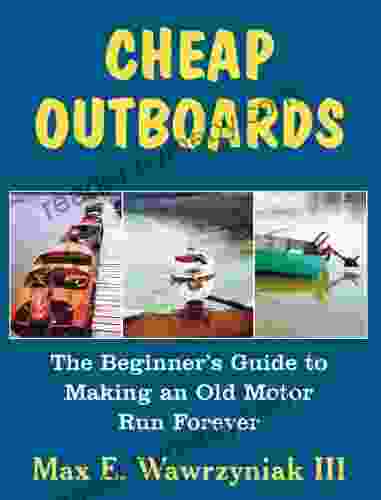Unlocking Success in the IELTS Speaking Test: A Comprehensive Guide

4.6 out of 5
| Language | : | English |
| File size | : | 870 KB |
| Text-to-Speech | : | Enabled |
| Enhanced typesetting | : | Enabled |
| Lending | : | Enabled |
| Screen Reader | : | Supported |
| Print length | : | 54 pages |
The International English Language Testing System (IELTS) Speaking Test is a crucial component of the overall IELTS exam, designed to assess your ability to effectively communicate in English in a real-world setting. Achieving a high band score in the Speaking Test is essential for success in your academic or professional endeavors. This comprehensive guide will provide you with all the necessary insights, strategies, and tips to excel in the IELTS Speaking Test and secure the desired score.
Understanding the IELTS Speaking Test
The IELTS Speaking Test consists of three parts, each designed to evaluate different aspects of your speaking skills.
- Part 1: and Interview - This section involves a brief conversation with the examiner, where you will be asked about familiar topics such as your work, studies, hobbies, and interests.
- Part 2: Individual Long Turn - In this part, you will be given a task card with a topic and specific instructions. You will have one minute to prepare and then two minutes to speak about the topic. Your response should be coherent, well-organized, and supported by relevant examples.
- Part 3: Two-Way Discussion - This section is a discussion between you and the examiner on a topic related to Part 2. It provides an opportunity to demonstrate your ability to express your opinions, engage in a dialogue, and respond to questions in a thoughtful and articulate manner.
Strategies for Success in the IELTS Speaking Test
1. Fluency and Coherence
* Practice speaking fluently and naturally, avoiding long pauses and fillers. * Use linking words and phrases to connect your ideas and create a cohesive narrative. * Structure your speech logically, with a clear , body, and .
2. Vocabulary and Grammar
* Expand your vocabulary by learning new words and phrases relevant to the IELTS topics. * Pay attention to correct grammar and pronunciation to impress the examiner. * Use a variety of sentence structures to demonstrate your command of the language.
3. Pronunciation and Intonation
* Practice pronouncing words clearly and correctly, paying attention to vowel sounds and stress patterns. * Use appropriate intonation to convey meaning and engage the examiner. * Be aware of your pace and volume, speaking at a comfortable speed and with sufficient volume.
4. Content and Organization
* Understand the task requirements carefully and provide relevant and accurate information. * Organize your ideas logically, using headings or bullet points if necessary. * Provide specific examples and evidence to support your points.
5. Confidence and Engagement
* Maintain eye contact with the examiner and speak with confidence. * Use gestures and body language appropriately to emphasize key points. * Engage in the conversation, asking questions and responding enthusiastically.
Tips for Each Part of the Speaking Test
Part 1: and Interview
* Be friendly and approachable, making an effort to build rapport with the examiner. * Answer questions concisely and accurately, providing enough detail to demonstrate your communication skills. * Ask clarifying questions if necessary to ensure you understand the examiner's instructions.
Part 2: Individual Long Turn
* Read the task card carefully and identify the key points. * Use the preparation time to brainstorm ideas and organize your thoughts. * During your speech, speak clearly and at a steady pace. * Provide specific details and examples to support your main points. * Finish your speech with a strong that summarizes your key ideas.
Part 3: Two-Way Discussion
* Listen attentively to the examiner's questions and respond appropriately. * Express your opinions clearly and support them with evidence. * Be willing to engage in a dialogue, asking questions and listening to the examiner's perspective. * Maintain eye contact and use appropriate body language to show your interest and engagement.
Practice and Preparation
Regular practice is essential for success in the IELTS Speaking Test. Here are some effective ways to prepare:
* Record yourself speaking: Record your responses to Part 2 and Part 3 tasks and listen back to them critically. Identify areas for improvement and work on them. * Practice with a partner: Find a study buddy or tutor to practice speaking with. They can provide feedback on your fluency, vocabulary, and pronunciation. * Attend IELTS preparation classes: Enroll in a course designed specifically for the IELTS Speaking Test. This will provide you with structured instruction and personalized feedback. * Use online resources: Utilize online platforms and apps that offer IELTS Speaking practice tests, vocabulary lists, and grammar exercises.
Benefits of Achieving a High Band Score in the IELTS Speaking Test
Achieving a high band score in the IELTS Speaking Test can open doors to numerous opportunities:
* Study abroad: Many universities and colleges require a high IELTS score for international students applying to their programs. * Work abroad: Employers in various countries often use IELTS scores as a benchmark for hiring non-native English speakers. * Immigration: Some countries require a high IELTS score for skilled workers and family members seeking immigration. * Personal and professional growth: Improving your English speaking skills will boost your confidence and communication abilities in both academic and professional settings.
Mastering the IELTS Speaking Test requires a combination of preparation, practice, and a strategic approach. By understanding the test format, implementing effective strategies, and dedicating yourself to consistent practice, you can achieve the desired band score and unlock your potential for success in any English-speaking environment. Remember, with dedication and the right guidance, you can conquer the IELTS Speaking Test and embark on your journey towards fluency and success.
4.6 out of 5
| Language | : | English |
| File size | : | 870 KB |
| Text-to-Speech | : | Enabled |
| Enhanced typesetting | : | Enabled |
| Lending | : | Enabled |
| Screen Reader | : | Supported |
| Print length | : | 54 pages |
Do you want to contribute by writing guest posts on this blog?
Please contact us and send us a resume of previous articles that you have written.
 Book
Book Novel
Novel Page
Page Chapter
Chapter Text
Text Story
Story Genre
Genre Reader
Reader Library
Library Paperback
Paperback E-book
E-book Magazine
Magazine Newspaper
Newspaper Paragraph
Paragraph Sentence
Sentence Bookmark
Bookmark Shelf
Shelf Glossary
Glossary Bibliography
Bibliography Foreword
Foreword Preface
Preface Synopsis
Synopsis Annotation
Annotation Footnote
Footnote Manuscript
Manuscript Scroll
Scroll Codex
Codex Tome
Tome Bestseller
Bestseller Classics
Classics Library card
Library card Narrative
Narrative Biography
Biography Autobiography
Autobiography Memoir
Memoir Reference
Reference Encyclopedia
Encyclopedia Kristie Robin Johnson
Kristie Robin Johnson J Donald Walters
J Donald Walters Sohail Daulatzai
Sohail Daulatzai Pete Peterson
Pete Peterson Paul F Robinson
Paul F Robinson Tom Wolfe
Tom Wolfe Mary Stone
Mary Stone Oskar Morgenstern
Oskar Morgenstern Peter Hellman
Peter Hellman Luis Preto
Luis Preto Taylor Jenkins Reid
Taylor Jenkins Reid Neha Gupta
Neha Gupta Moritz Fink
Moritz Fink Luca Mezzalira
Luca Mezzalira Mari Schuh
Mari Schuh Tony Clunn
Tony Clunn Steven Satterfield
Steven Satterfield Ruby Mosher
Ruby Mosher Rayna Denison
Rayna Denison Tennille Chaffin
Tennille Chaffin
Light bulbAdvertise smarter! Our strategic ad space ensures maximum exposure. Reserve your spot today!

 Oliver FosterEmbark on a Historical Journey with "History of Travelers and Pilgrims: An...
Oliver FosterEmbark on a Historical Journey with "History of Travelers and Pilgrims: An...
 Art MitchellArt, Culture, and the Future of the Island: Unlocking the Creative Potential...
Art MitchellArt, Culture, and the Future of the Island: Unlocking the Creative Potential... Marvin HayesFollow ·14.8k
Marvin HayesFollow ·14.8k Amir SimmonsFollow ·15.6k
Amir SimmonsFollow ·15.6k William GoldingFollow ·10k
William GoldingFollow ·10k Salman RushdieFollow ·3.6k
Salman RushdieFollow ·3.6k Mark TwainFollow ·9.9k
Mark TwainFollow ·9.9k Spencer PowellFollow ·10k
Spencer PowellFollow ·10k Gerald BellFollow ·19.3k
Gerald BellFollow ·19.3k Isaiah PriceFollow ·7.3k
Isaiah PriceFollow ·7.3k

 Wayne Carter
Wayne CarterThe Beginner's Guide to Making an Old Motor Run Forever
If you're like most...

 Deacon Bell
Deacon BellNepali Adventure: Kings and Elephant Drivers,...
In the heart of the...

 Carlos Drummond
Carlos DrummondThe Romantic Revolution: A Journey Through History and...
Unveiling the...

 Kazuo Ishiguro
Kazuo IshiguroUnlock Your Inner Innovator: Dive into the New Wave...
Embark on a Transformative Journey of...

 William Golding
William GoldingCrazy Horse: The Lakota Warrior's Life and Legacy
In the annals of Native...

 Hector Blair
Hector BlairMildred and Richard Loving: The Inspiring Story of...
Mildred and Richard Loving were an...
4.6 out of 5
| Language | : | English |
| File size | : | 870 KB |
| Text-to-Speech | : | Enabled |
| Enhanced typesetting | : | Enabled |
| Lending | : | Enabled |
| Screen Reader | : | Supported |
| Print length | : | 54 pages |








